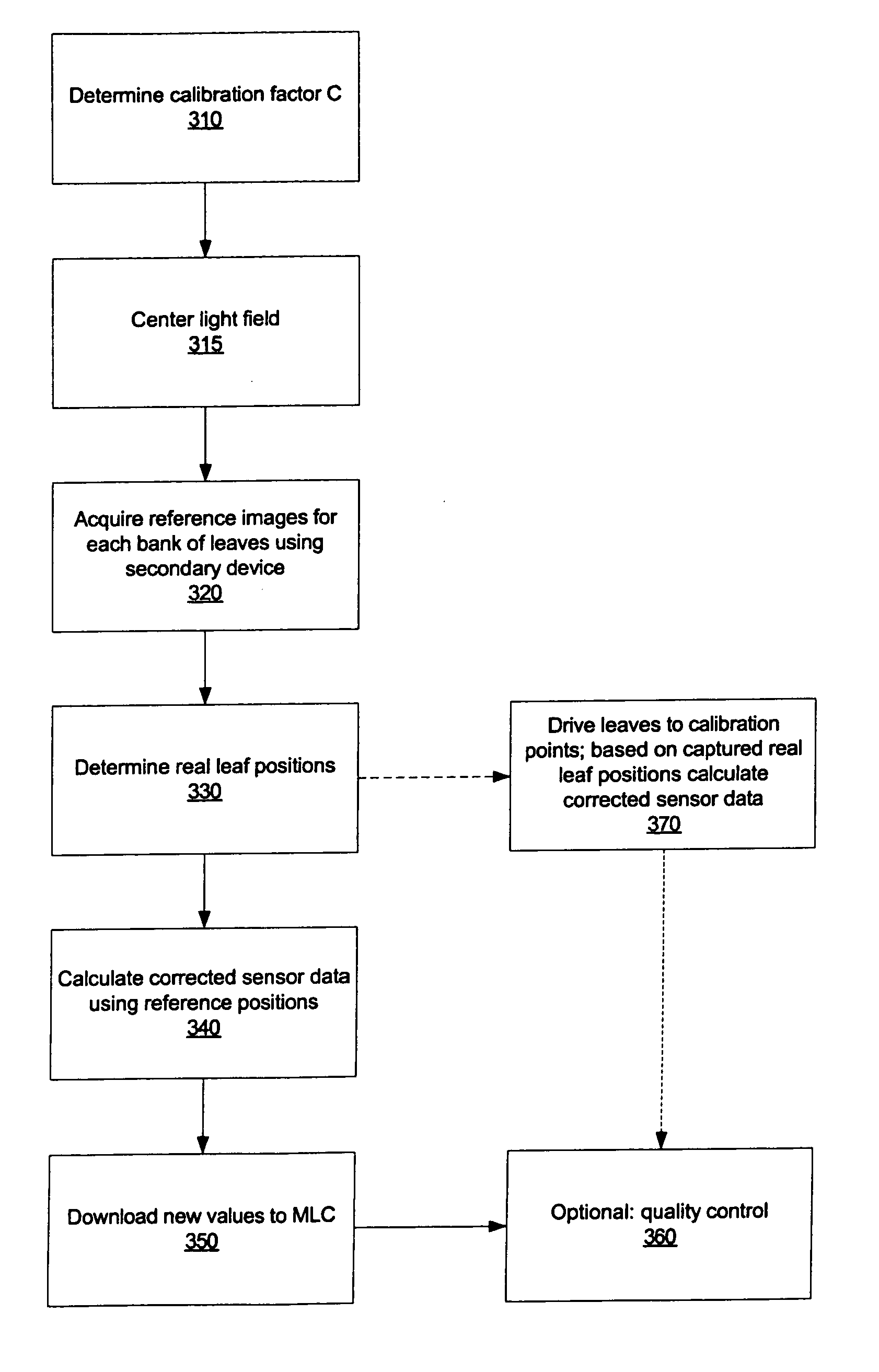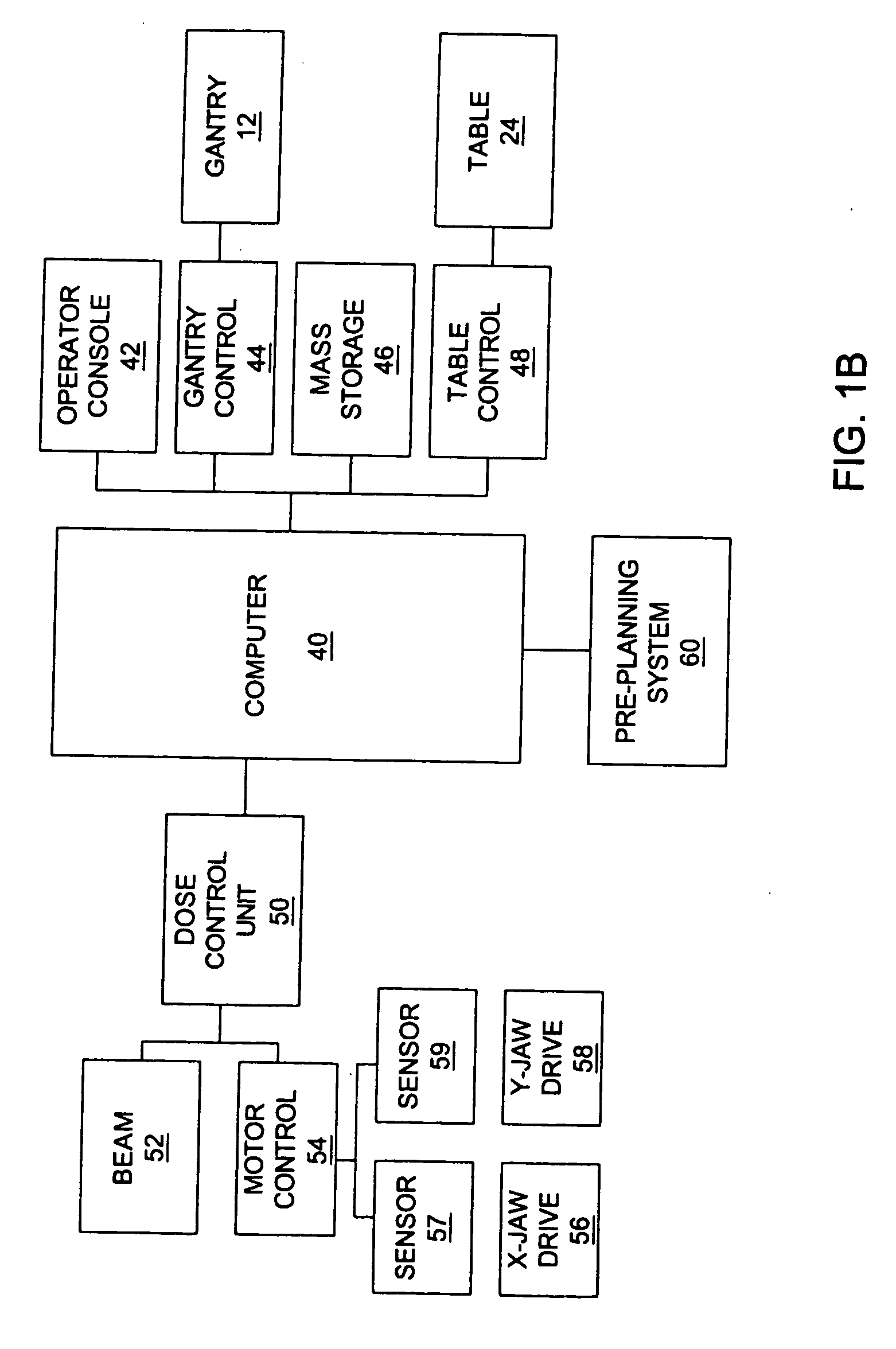Multi-leaf collimator position sensing
a collimator and position sensing technology, applied in radiation therapy, instruments, therapy, etc., can solve the problems of complex treatment, insufficient field shape variability, and particularly great danger of proton beam therapy devices
- Summary
- Abstract
- Description
- Claims
- Application Information
AI Technical Summary
Benefits of technology
Problems solved by technology
Method used
Image
Examples
Embodiment Construction
[0026] The following description is provided to enable any person of ordinary skill in the art to make and use the invention and sets forth the best modes contemplated by the inventor for carrying out the invention. Various modifications, however, will remain readily apparent to those in the art.
[0027] Some embodiments of the present invention provide a system, method, apparatus, and means to calibrate a multi-leaf collimator using a secondary image acquisition device such as a scanner to capture the shape of a projected light field on the patient bed. The calibration is based upon using the secondary image acquisition device to capture a series of reference image captures, uploading the capture data to a personal computer or image processing system, and determining calibration parameters and feeding such parameters to a control system to perform the actual adjustment of collimator leaves.
[0028] Referring first to FIG. 1A, a radiation therapy device 10 is shown in which embodiment...
PUM
 Login to View More
Login to View More Abstract
Description
Claims
Application Information
 Login to View More
Login to View More - R&D
- Intellectual Property
- Life Sciences
- Materials
- Tech Scout
- Unparalleled Data Quality
- Higher Quality Content
- 60% Fewer Hallucinations
Browse by: Latest US Patents, China's latest patents, Technical Efficacy Thesaurus, Application Domain, Technology Topic, Popular Technical Reports.
© 2025 PatSnap. All rights reserved.Legal|Privacy policy|Modern Slavery Act Transparency Statement|Sitemap|About US| Contact US: help@patsnap.com



